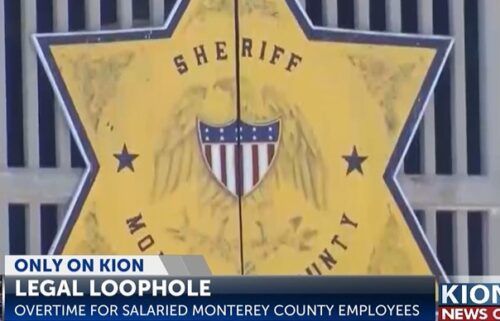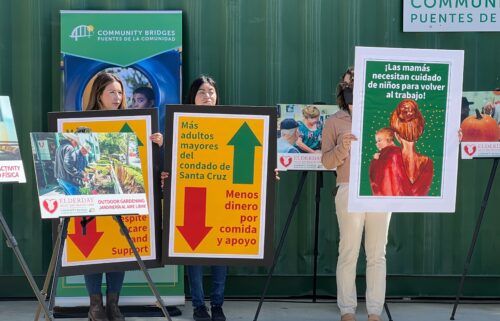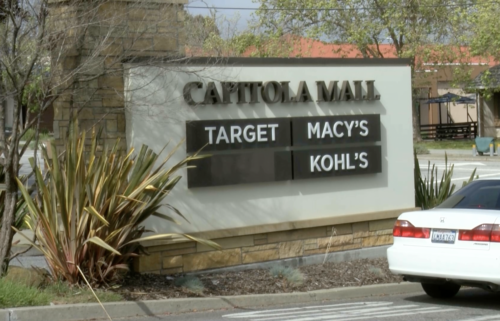A constant game of animal crossing: Roadkill and wildlife collisions on the central coast
CENTRAL COAST, Calif. (KION) Central coast residents are no strangers to long commutes and busy roadways. Paired with the variety of wildlife species that also reside within the area, roadkill is a longstanding issue that wildlife advocates, transportation experts, and everyday citizens using the roadways must face.
Weather Forecaster Courtney Aitken's exclusive report on roadkill and wildlife-related collisions.
“One of the reasons many people live in Monterey County is for our beautiful natural habitat, the great scenery, and all the wonderful wildlife," said a smiling Beth Brookhouser, standing out front of the SPCA for Monterey County's adoption center on a sunny morning. Brookhouser is the SPCA's Vice President of Marketing & Communications, and is more than familiar with the local wildlife ecosystem and the issues that these animals face - including vehicle collisions.
According to Brookhouser, these incidents are especially common this time of year. "It's deer mating season right now," she explained. "It's called ‘the rut.’ And during mating season, the deer aren't always looking where they're going. They’re driven by their hormones." Brookhouser added that deer actually aren't the species that is most commonly hit by cars. Instead, the ones that end up at the roadside most often are smaller critters such as rabbits, squirrels, and raccoons. However, deer incidents are more likely to be reported as they are often traumatic events for drivers.
Monterey County Animal Shelter’s Cindy Burnham elaborated on the danger of deer-related collisions. “They can go right through the windshield,” Burnham said. “Just with the sheer size of them, it’s definitely a dangerous situation..If you're in areas where there’s more likely to be deer running amok, just be vigilant and be prepared.”
As it turns out, the central coast contains numerous areas that are hot spots for wildlife-related accidents. In fact, a dedicated team of researchers at the Road Ecology Center based out of UC Davis has taken the liberty of mapping out roadkill hotspots across the state of California.
Monterey County’s very own Highway 68 has particularly high stats when it comes to roadkill reports. In fact, the Transportation Agency for Monterey County (TAMC) has a detailed plan in order to tackle this predicament. The project, titled “State Road 68 Scenic Highway Plan” allots over $20 million alone for what it calls “wildlife connectivity improvements”. According to a statement from TAMC Executive Director Todd Muck, designs are currently underway for five different wildlife crossings. Finalizations are set to be done in 2023, while construction is estimated to take place in 2026.
While this large-scale undertaking shows potential to improve roadkill statistics on the central coast in the long term, the issue of wildlife-related collisions still remains. So what are possible solutions in the short term?
According to Road Ecology Center director Fraser Shilling, temporarily closing roads, or stretches of road, has proven to be very helpful. “They [animals] migrate more at night and after it rains,” he explained. “So closing a road is a very effective method for areas that are of particular concern, especially if it’s for short durations.” Shilling also mentioned that practicing safe driving goes a long way, as many people tend to “drive too fast for the conditions.”
Resources like the Road Ecology Center’s map of roadkill hotspots can help commuters to be adequately prepared for what they may encounter on the roadways. In addition, the Road Ecology Center team has created a very streamlined way to report animals - dead or alive - simply from the palm of one’s hand. The platform is called the California Roadkill Observation System (CROS). Shilling describes it as “a one click solution to uploading roadkill records.” He said, “If you were to drive down the road, pull out your phone and just take a picture, it uploads immediately. And it adds the location, date, and time automatically [as long as you have location services turned on].”
CROS can be accessed at https://roadecology.ucdavis.edu/research/projects/cros.
While the pick-up and disposal of roadkill is the responsibility of Monterey County Public Works, injured animals that are still alive can be reported to the SPCA. Those animals are then picked up, treated for their injuries, and are rehabilitated whenever possible.
There are some very reliable systems in place when it comes to safety on central coast roadways, but it ultimately starts with the driver. When in doubt, slow down and always try to remain mindful of fellow four-legged travelers.




